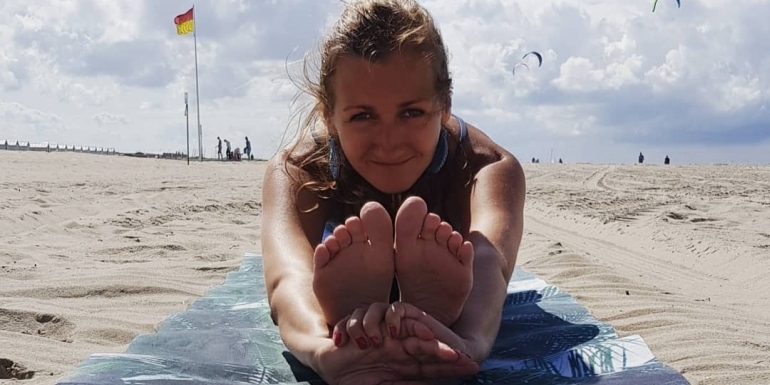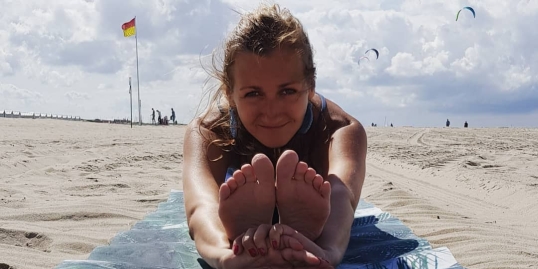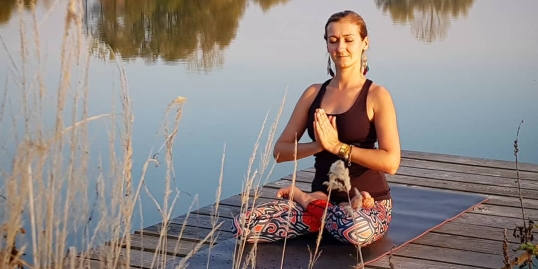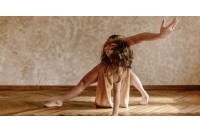
Many people wonder how yoga asanas differ from similar gymnastic positions, especially as many systems contain elements similar to yoga, such as working with breathing, a certain concentration or even something similar to yogic bandh.

For me, the element that distinguishes asanas of yoga from gymnastics (with all due respect for effort and incredible discipline of the gymnasts) is the fact that asanas serve a wider purpose of yoga (personal freedom, i.e. freedom from automatism) and the special consciousness that we seek during exercises. I always repeat that in yoga one should not do harder or more, but rather feel more.
That is why, when we start working with our body in yoga, we have to abandon the habitual and schematic action. Then it is worthwhile to forget everything for a while what we have learned (what we know, what we can do) and try to dance with the feelings of our body. We make a move, the body responds, we observe this response and follow it, we follow our movement. We do not impose any specific way of acting. It is a kind of contact - improvisation. However, the partner for us is our own body. Until now, we have based on our previous knowledge, which sometimes turns out not to be knowledge, but prejudices or negative conditions, patterns of action... Now we are going to an unknown, less safe place, it would be good to be more open, less invasive and less demanding for our bodies. The movement during practice should be very light, slow, attentive, conscious, internal, different than before. Above all, it should be non-aggressive, full of relaxation and searching for a balance between effort and effortlessness.

This is probably the most difficult thing - to slow down the pace, to wait for a response from the body and to follow it. Do not accelerate, do not move further until you get a clear signal from your body that you can (it is about releasing from tension, relaxing a given area). The best (though perhaps sometimes the most difficult) in such a work is that there is no pre-imposed way of performing the technique. Everyone is different, has a different body, different tensions and injuries, different experiences and emotional states. For everyone working with the body (including during asan yoga practice) will discover something different, help to relax in a slightly different way. When we work in this way we can make mistakes, but at the same time we learn how to perform a movement that will bring us benefits.
Good luck!
Agnieszka Wielobób apart from teaching yoga and ayurveda, is also Tymek's mother, Maciek's wife, the author of the book "Ayurveda in practice", a lecturer at postgraduate studies on yoga and ayurveda. In her everyday work she helps other people feel better, get rid of tension from the body, strengthen it, increase peace of mind, improve concentration, attentiveness and relaxation, accept themselves. In her teaching practice she focuses on conscious work with breathing, gentle, non-aggressive work with the body, bringing closer the understanding of body mechanics and learning how to feel. She loves talking about fascias, teaching fluent yoga work and helping other people find joy and lightness in movement.




Leave a Reply Cancel Reply